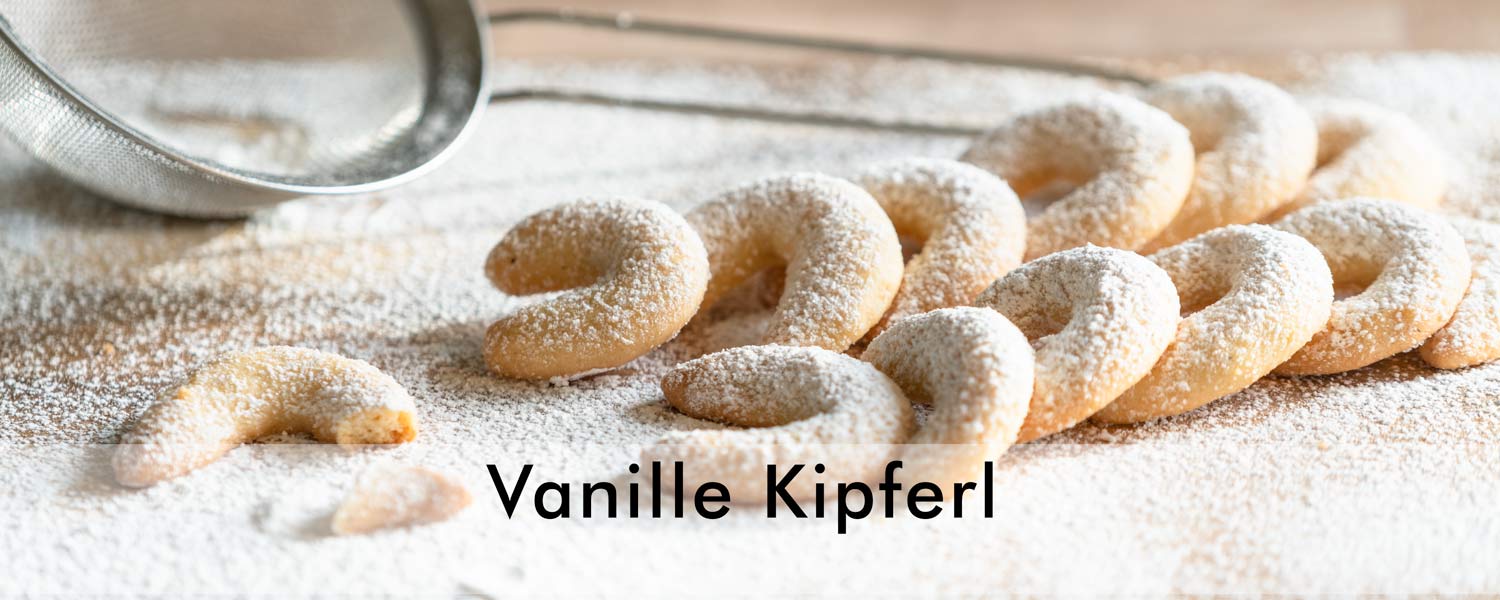
Vanillekipferln, Zimtsterne and Spitzbuben
Germany has a long tradition of baking cookies at Christmas time, and for many people the aroma of festive baking is one of their fondest childhood memories. The cookie derives its name from the Dutch word koekje or koekie, which means „little cake“.
Rolling out the dough and cutting out Christmas shapes is still a popular festive activity, particularly with children. Around the time of the Winter solstice, the Teutons are thought to have produced and eaten an early form of gingerbread made of honey and flour – to provide energy in the colder months and pacify the evil spirits.
This pagan custom was kept up after the introduction of Christianity and continued primarily in the monastic tradition of baking gingerbread.
The baking of cookies at home started in the 18th century with the increase in coffee, tea and cocoa consumption. In the higher echelons of society, it was considered good form to serve small cookies or biscuits with coffee. It was not until the middle of the 19th century that poorer households could afford to bake their own biscuits, and this became associated with the Old German custom of baking honey biscuits when the nights started to draw in.
Traditional German Christmas cookies include Vanillekipferln – crescent-shaped shortbread with nuts and vanilla, Zimtsterne – star-shaped biscuits made of cinnamon and nuts, and Spitzbuben – also a type of shortbread consisting of two halves sandwiched together with jam.
Recipe for Vanille-Kipferln
You will need: 2 vanilla pods, 280g flour, 100g ground almonds, 70g sugar, 210g cold butter, 100g icing sugar for dusting, flour for rolling out, greaseproof paper.
To make:
nead the ingredients into a smooth dough. Divide this into four sausage-shaped rolls of equal size and refrigerate over night. Cut one-centimetre thick slices from the rolls, shape them into crescents, place on a baking sheet and bake on the middle shelf for 12 minutes at 160ºC. Dust the biscuits with icing sugar while still warm.

